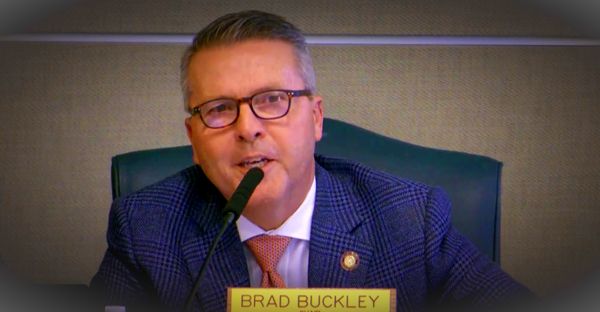
Rate of tropical tree loss sped up in 2022, mostly in the Amazon, despite Cop26 commitments
The ongoing destruction of the world’s rainforests sped up in 2022, putting worldwide promises to end deforestation by 2030 in serious doubt.
The world lost 10% more tropical forest in 2022 than in the previous year, according to a new report based on data from the University of Maryland and published on World Resources Institute’s (WRI) Global Forest Watch platform. The data measures tree loss, which can also occur due to wildfires, rather than just deforestation, which is always human.
- SEE MORE Why is halting deforestation so hard?
- SEE MORE How did a humpback whale end up in the Amazon rainforest?
- SEE MORE Saving the rainforest: the pledge of Brazil’s new president
The total loss amounted to 4.1 million hectares, or about 11 football fields per minute, the report suggests. The area that disappeared is roughly “the size of Switzerland”, according to CNN.
This comes despite the promises made by 145 countries’ leaders at the Cop26 UN climate conference in Glasgow in 2021, to stop and even reverse forest loss by 2030. “The trend is moving in the wrong direction,” said the new report. Humanity is “not on track” to meet its commitments.
What is the state of the rainforests?
Deforestation and tree loss are driven by a growing demand for food and fuel, and exacerbated by climate change, fires and disease outbreak.
The world’s largest rainforest, the Amazon, was by far the greatest victim of forest loss. All six countries that share it – Brazil, Bolivia, Peru, Colombia, Ecuador and Venezuela – experienced deforestation, said Mongabay, but “none were hit as hard as Brazil”.
About 43% of the total tropical forest loss in 2022 took place in Brazil, and the speed of loss increased by 15% from 2021 to 2022.
Most of this was down to deforestation under Jair Bolsonaro’s presidency, when the administration eroded environmental protections and gutted enforcement agencies.
“The 2022 deforestation data is a stark reminder that we are in a race against time for the Amazon,” said Leila Salazar-López, executive director of California-based nonprofit Amazon Watch.
Forest loss had previously decreased dramatically in the early noughties, during President Luiz Inácio Lula da Silva’s first term in office. Now, with Lula six months into his second term as president, it is at its highest level since 2005.
“Bolsonaro has been accused to turning a blind eye to soaring rates of deforestation during his four-year term,” said the Financial Times.
Environmentalists said that the “myriad criminal groups” in the Amazon, such as illegal loggers, ranchers and miners, “accelerated their activities last year to maximise profits ahead of Bolsonaro’s anticipated election defeat in October”.
Lula has vowed to end deforestation, but it will take time to see any progress while he re-equips and restaffs enforcement agencies.
But some say it may already be too late. The Amazon is fast approaching a “tipping point”, according to a study published last year. The forest is “a crucible of biodiversity” and normally acts as “a large terrestrial carbon sink”, but its efficiency is declining.
The Democratic Republic of Congo lost more than half a million hectares of primary forest in 2022, accounting for 12.5% of total loss, mostly due to forest clearing for crop cultivation to feed its growing population. Primary forest loss rapidly increased in other countries, such as Ghana and Bolivia. The latter was one of the few countries boasting vast swathes of forest that did not sign the Cop26 commitment.
But Indonesia and Malaysia have managed to keep rates of primary forest loss at near record low levels, accounting for 5.6% and 1.7% of the total loss respectively.
That is mainly thanks to a clampdown on palm oil plantations, and stronger regulations on the production of palm oil, which causes massive deforestation.
Why does tropical forest loss matter?
Deforestation can intensify climate change. Forests remove carbon dioxide from the air, but because they also store it, they emit it when they are cleared, turning into huge sources of emissions.
The destruction of primary forests in 2022 produced about 2.7 gigatonnes of carbon dioxide emissions, equivalent to India’s annual fossil fuel emissions, according to the report.
“Land use change is the second largest source of greenhouse gas emissions behind the burning of fossil fuels,” said The Guardian, “and is a major driver of biodiversity loss.”
Keeping world temperatures to 1.5C above pre-industrial levels is “unlikely” without halting rainforest destruction.
This year, researchers proved a correlation between deforestation and regional rainfall for the first time. The more rainforests are cleared, the less farmers nearby can depend on rain for crops, according to a study published in the journal Nature.
There are also about 1.6 billion people who rely on forest resources to survive. Deforestation particularly affects indigenous communities, who are forced from their homes by logging and mining.
“Forests are critical for our wellbeing and the wellbeing of planet Earth,” Inger Andersen, the UN’s environment chief, said in a statement. “Ending deforestation and halting forest cover loss are essential ingredients to fast-tracking climate action, to building resilience and to reducing loss and damage.”







